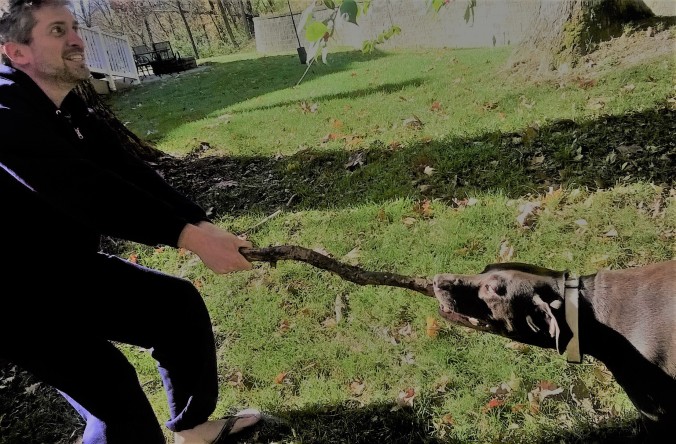I can’t remember a time I’ve ever included a joke in my blog! Here goes…this is pretty funny! Let me know in the comments, if you like it or not.
A journalist was assigned to the Jerusalem bureau of his newspaper. He gets an apartment overlooking the Wailing Wall. After several weeks he realizes that whenever he looks at the wall he sees an old Jewish man praying vigorously. The journalist wondered whether there was a publishable story here. He goes down to the wall, introduces himself and says: “You come every day to the wall. What are you praying for?”
The old man replies: “What am I praying for? In the morning I pray for world peace, then I pray for the brotherhood of man. I go home, have a glass of tea, and I come back to the wall to pray for the eradication of illness and disease from the earth.”
The journalist is taken by the old man’s sincerity and persistence. “You mean you have been coming to the wall to pray every day for these things?”
The old man nods.
“How long have you been coming to the wall to pray for these things?”
The old man becomes reflective and then replies: “How long? Maybe twenty, twenty-five years.”
The amazed journalist finally asks: “How does it feel to come and pray every day for over 20 years for these things?”
“How does it feel?” the old man replies. “It feels like I’m talking to a wall.”*
Do you ever feel that way about prayer? Ever feel frustrated and like it isn’t making much difference, so why do it? Ever feel like it is something we do first before we get to the “real work” of church planting?
There have been times in my life when I felt like prayer was a duty and a chore more than a joy.
That has changed a lot for me in the past few years. Prayer is now a great blessing to me. Prayer is my first priority. It is now some of the most meaningful kingdom work in my life. I have repeatedly seen God use prayer to dramatically impact the amount of fruit He releases. I’m sure that all those who have seen disciple making movements truly multiply would say the same.
Not all prayer feels that way or produces those results however. What makes the difference?
In Matthew 21, there is an unusual little story of Jesus and a fig tree. Jesus is hungry. He sees a tree without fruit. A bit frustrated (it seems), he curses it and it withers. His disciples are amazed at His power and comment about it. He then tells them, this is nothing…
If you believe, you will receive whatever you ask for in prayer.” (Matt 21:22)
What makes the difference in our prayers according to Jesus? Faith. When we pray with faith, amazing answers start to be released. Prayer becomes much more exciting, and much more effective.
Jesus wants us to have child-like faith when we pray for the Lost, for those we train, and for the release of movements among the unreached.
I had a pretty amazing childhood. I grew up in West Africa. One of the perks of living there was that my dad decided to buy me a new pet every birthday. It was pretty fun!
One year he bought me a parrot- An African gray. The problem was, this parrot wouldn’t talk. We previously had another parrot that talked a lot, so we kept trying to teach our new parrot (his name was Mark). Sadly, he just didn’t seem to have it in him.

One day, my dad said, “If that parrot doesn’t talk by the end of this month, I’m going to get rid of it!”
I was so upset! My little ten year old heart was shaken. I started praying daily for the parrot to talk….together with all manner of other tactics I tried to make Mark spit out his first parrot words. Nothing. Nada. I kept praying. I knew God could help him talk!
On the very last day of the month, (this is the absolute truth) my dad walked into the empty house. No one else was there. Do you know what happened?
The parrot said “Hello Jerry” (my dad’s name)! Prayer answered! Parrot saved.
Child-like faith goes a long way. Jesus said “If you believe…”
God wants us to pray from a place a faith, not out of duty. He wants us to pray from a place of authority. We pray knowing that He has promised us an inheritance among the unreached and that He will be faithful to release it. We must pray specifically and consistently. We must pray believing that, as Jesus said in Luke 10:2, “the harvest is plentiful.”
When I pray in this way I get excited. I know the answer is coming. I know it is impossible for me to pray and for God to do nothing.** As soon as I pray, He is taking action. Angels have been sent on assignments as a result of my prayers. God is working. I get to be part of that!
Take a moment…I know you are busy, but just a short one. Stop and think about your prayer life. Is it what you want it to be? What needs to change this year? How could you pray differently so you enjoy it more and see your prayers produce better results too?
Prayer is a major key to seeing the release of movements of disciples. It’s not hard to do. Just get started.
Why not take 5 minutes right now to pray for the Lost around you and for those you are discipling?
Then, plan a time this week to set aside for prayer.
You will be taking an important step forward in releasing a disciple making movement.
**I believe I first heard and took hold of this idea after listening to something from Bethel Church’s LDP program.
Share this now with friends
 In order to better serve you, we have moved this website to a new location! Dmmsfrontiermissions has moved to http://dmmsfrontiermissions.com/
In order to better serve you, we have moved this website to a new location! Dmmsfrontiermissions has moved to http://dmmsfrontiermissions.com/









